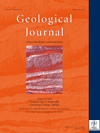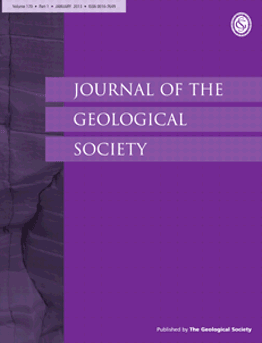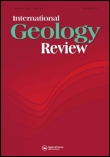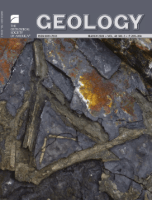
GEOLOGICAL JOURNAL
Scope & Guideline
Pioneering insights into earth processes and materials.
Introduction
Aims and Scopes
- Geochemistry and Petrogenesis:
This area focuses on the chemical composition and processes that govern the formation of rocks and minerals, including studies on isotopic compositions and trace elements to understand geological history. - Geochronology:
Research in this scope employs various dating techniques, particularly U-Pb zircon dating, to establish the ages of geological formations and events, aiding in the reconstruction of Earth’s history. - Tectonic Evolution:
Papers often explore the tectonic settings and processes that shape geological structures, including subduction zones, continental collisions, and the evolution of orogenic belts. - Sedimentology and Stratigraphy:
This includes studies on sedimentary processes, depositional environments, and stratigraphic frameworks that help in understanding the geological history and resource potential of specific areas. - Paleoenvironmental Reconstruction:
Research aimed at reconstructing past environments and climates, using proxies such as sediment composition and fossil records to infer climatic conditions over geological time. - Mineralization and Economic Geology:
This scope investigates the processes leading to the formation of economically significant mineral deposits, including studies on ore genesis and the geochemical conditions that favor mineralization. - Geohazards and Risk Assessment:
This involves understanding geological hazards such as landslides, earthquakes, and volcanic activity, and assessing their impact on human activities and infrastructure.
Trending and Emerging
- Sustainable Resource Management:
There is a growing emphasis on studies that explore sustainable practices in resource extraction and management, reflecting a broader societal focus on environmental sustainability. - Climate Change Impacts:
Research addressing the geological implications of climate change, including changes in sedimentation patterns, erosion, and landscape evolution, is increasingly prevalent. - Innovative Analytical Techniques:
Emerging methodologies such as machine learning and advanced geochemical analysis are gaining traction, allowing for more sophisticated interpretations of geological data. - Integrated Environmental Assessments:
Studies that combine geological, geochemical, and ecological perspectives to assess environmental impacts and resource management are on the rise, indicating a trend towards interdisciplinary research. - Geohazards and Climate Resilience:
Research focusing on the assessment and management of geological hazards in the context of climate change is becoming more prominent, highlighting the need for resilience strategies in vulnerable regions.
Declining or Waning
- Traditional Petroleum Geology:
Papers specifically focused on conventional petroleum geology seem to be less frequent, possibly due to the industry's shift towards unconventional resources and renewable energy sources. - Palaeontology:
Although still a relevant field, the frequency of papers solely dedicated to palaeontological studies appears to be decreasing, with more emphasis on integrated geological studies that include palaeoecological insights as part of broader geological research. - Geological Mapping Techniques:
Research focused exclusively on traditional geological mapping methods is waning, as there is an increasing reliance on advanced geophysical and remote sensing techniques. - Static Resource Assessments:
There is a noticeable decline in studies that provide static assessments of geological resources, as the focus shifts towards dynamic models that incorporate environmental and sustainability considerations.
Similar Journals

Journal of Earth Science
Exploring the depths of Earth and beyond.Journal of Earth Science, published by the China University of Geosciences, Wuhan, is a leading journal in the field of Earth and Planetary Sciences, recognized for its significant contributions to the understanding of geological processes and environmental challenges. With an impressive Q1 ranking among Earth and Planetary Sciences journals and a strong position at Rank #39/195 in Scopus, this journal not only showcases high-quality research but also serves as a crucial platform for disseminating innovative findings, spanning a broad spectrum of topics from geophysics to climate change. The journal adopts an open access model, which enhances the visibility and accessibility of research articles published from 2009 to 2024, thereby facilitating collaboration and knowledge sharing among the global scientific community. With its commitment to advancing geosciences, Journal of Earth Science is invaluable for researchers, professionals, and students alike, eager to stay informed and contribute to ongoing discussions in this dynamic field.

BASIN RESEARCH
Your Gateway to Cutting-Edge Geological DiscoveriesBasin Research, published by Wiley, is a leading journal in the field of Geology, with a distinguished reputation affirmed by its Q1 ranking in the 2023 category of Earth and Planetary Sciences. Since its inception in 1988, the journal has been at the forefront of fundamental and applied research surrounding sedimentary basins, delving into their evolution, architecture, and dynamics. With an impressive Scopus rank of #36 out of 321, placing it in the 88th percentile, Basin Research serves as a critical platform for researchers, professionals, and students engaged in advancing our understanding of geological processes and their implications for natural resources and environmental policies. The journal is accessible to a global audience and emphasizes high-quality, peer-reviewed articles that cover a diverse array of topics from basin analysis to sedimentology and beyond. For those interested in deepening their insights into this vital area of study, Basin Research stands as an invaluable resource in the academic landscape.

ANNALES SOCIETATIS GEOLOGORUM POLONIAE
Unveiling Geological Insights from Poland and the World.ANNALES SOCIETATIS GEOLOGORUM POLONIAE is a distinguished journal published by the Polish Geological Society, focusing on pivotal research in the fields of geology, economic geology, and stratigraphy. With an ISSN of 0208-9068, this journal has established itself as an essential platform for disseminating significant findings and advancements in geological sciences since its convergence in 2008. The journal proudly holds a Q2 quartile ranking in the categories of Economic Geology, Geology, and Stratigraphy as of 2023, indicating its respectable position within the global academic community. Researchers will find its indexed status in Scopus, ranking #138/321 in Geology and showcasing a solid presence in key geological sub-disciplines. While the journal is not open access, it remains a vital resource for professionals and students striving for insight into contemporary geological research. Located in Krakow, Poland, the journal continues to contribute significantly to the understanding of geological processes and resources, making it an indispensable reference for anyone in the field.

JOURNAL OF THE GEOLOGICAL SOCIETY
Empowering Geoscientists with High-Impact ResearchJOURNAL OF THE GEOLOGICAL SOCIETY, published by GEOLOGICAL SOC PUBL HOUSE, is a premier academic journal dedicated to advancing the field of geology. With a rich history dating back to 1845 and continuously published until 2024, this journal caters to a diverse audience of researchers, professionals, and students involved in earth sciences. The journal is recognized for its high impact factor, situating it in the top Q1 category in the field of geology, as indicated by its impressive Scopus rank of #49 out of 321, positioning it at the 84th percentile in Earth and Planetary Sciences. This esteemed scholarly platform promotes rigorous peer-reviewed research, ensuring that novel findings contribute to the global geological discourse. Although it operates under a subscription model, the journal's archive offers valuable insights for anyone pursuing excellence in geological research. The JOURNAL OF THE GEOLOGICAL SOCIETY stands as a vital resource for disseminating scientific knowledge and fostering educational growth within the field.

Geosphere
Bridging Disciplines in the Quest for Earth’s TruthGeosphere is a premier open access journal published by the Geological Society of America, Inc., dedicated to advancing the fields of geology and stratigraphy. Since its inception in 2005, this journal has established itself as a critical platform for sharing high-quality research, evidenced by its robust positioning in the 2023 Scopus rankings, where it holds the 12th rank in stratigraphy and 75th in geology. With an impressive impact factor and a commitment to open access since 2018, Geosphere facilitates the dissemination of significant findings to a global audience, making it an essential resource for researchers, professionals, and students alike. The journal's scope includes a wide range of topics related to Earth and Planetary Sciences, encouraging interdisciplinary collaboration and innovation. Based in the United States, Geosphere continues to foster a community dedicated to understanding the Earth's processes and resources, ensuring that it remains at the forefront of geological research.

INTERNATIONAL JOURNAL OF EARTH SCIENCES
Pioneering Research for a Sustainable FutureINTERNATIONAL JOURNAL OF EARTH SCIENCES, published by Springer, is a leading journal in the field of Earth and Planetary Sciences, distinguished by its Q1 quartile ranking in the 2023 category of Earth and Planetary Sciences (miscellaneous). With an ISSN of 1437-3254 and an E-ISSN of 1437-3262, this journal has been a pivotal platform for researchers, academics, and practitioners since its inception in 1996. The journal's focus encompasses a broad range of topics within Earth sciences, making it a vital resource for contributions that enhance our understanding of geological processes, climate change, and planetary dynamics. The impact factor reflects its high standards and the significance of the research it publishes, ranking it in the 74th percentile among its peers as per Scopus. Furthermore, the journal offers Open Access options, facilitating the global dissemination of groundbreaking research. The editorial team is committed to advancing knowledge in Earth sciences, serving as an essential reference for students and professionals looking to engage deeply with this dynamic field.

INTERNATIONAL GEOLOGY REVIEW
Elevating the discourse in Earth and planetary sciences.INTERNATIONAL GEOLOGY REVIEW, published by Taylor & Francis Inc, is a premier journal dedicated to advancing the field of geology since its inception in 1959. With its Q1 ranking in the field of Geology for 2023, this journal is a significant platform for researchers, professionals, and students exploring the intricacies of Earth and planetary sciences. The journal has been rated in the 81st percentile within Scopus rankings, reflecting its influence and the high quality of articles published. Although it does not offer Open Access options, the journal maintains a rigorous peer-review process to ensure the publication of original and impactful research. With an extensive archive projected to continue until 2024, INTERNATIONAL GEOLOGY REVIEW serves as an essential resource for those seeking to deepen their understanding of geological phenomena, making it a vital contributor to the global scientific community.

ACTA GEOLOGICA SINICA-ENGLISH EDITION
Pioneering Discoveries in Geology and BeyondACTA GEOLOGICA SINICA-ENGLISH EDITION is a distinguished academic journal published by Wiley, providing a platform for cutting-edge research in the field of geology. With an ISSN of 1000-9515 and E-ISSN 1755-6724, this journal has been a pivotal resource since its inception in 1988, catering to scholars and professionals until 2024. The journal is recognized for its high-quality articles, achieving a Q2 ranking in the field of Geology according to the 2023 category quartiles, and ranks #122 out of 321 in the Scopus Earth and Planetary Sciences sector, placing it within the 62nd percentile among its peers. Although currently not available as an open access publication, it remains a significant repository of knowledge that supports ongoing geological research and exploration. For researchers, students, and professionals looking to deepen their understanding of geological sciences, ACTA GEOLOGICA SINICA-ENGLISH EDITION stands as an essential journal, promoting collaboration and innovation in the earth sciences.

Swiss Journal of Geosciences
Connecting Researchers to the Heart of Earth ScienceSwiss Journal of Geosciences is a prestigious academic journal dedicated to advancing the field of geosciences, published by SPRINGER INTERNATIONAL PUBLISHING AG. Since its inception in 2007, the journal has established itself as a leading platform for disseminating high-quality research findings in various domains related to Earth and planetary sciences, achieving a notable Q1 ranking in Geology as of 2023. With a solid reputation reflected in its Scopus ranking of Rank #72/321, the journal stands in the 77th percentile within its category. Based in Switzerland, the Swiss Journal of Geosciences embraces an open access model, making it easier for researchers, professionals, and students worldwide to access vital geological research without barriers. The journal’s objectives include promoting interdisciplinary research and fostering insights that address both fundamental and applied geoscientific problems, ensuring it remains a crucial resource for those seeking to understand our planet’s dynamics. Engage with pioneering research and contribute to the vibrant community of geoscientists by exploring the impactful articles published within its pages.

GEOLOGY
Pioneering Insights in Geology and Earth SciencesGEOLOGY, published by the Geological Society of America, Inc, is a premier journal dedicated to advancing knowledge, research, and discussion in the field of geology. With an ISSN of 0091-7613 and an E-ISSN of 1943-2682, this journal stands out with an impressive Q1 ranking in Geology for 2023, positioning it among the top journals in the realm of Earth and Planetary Sciences, specifically holding a remarkable rank of 11 out of 321, reflecting its 96th percentile status. This journal aims to publish innovative research articles that cover all aspects of geology, from tectonics and sedimentology to paleontology and mineralogy, offering invaluable insights for researchers, professionals, and students alike. Although not currently open access, GEOLOGY maintains a rigorous review process ensuring the quality and integrity of the research it publishes. For more than five decades, spanning from its inception in 1973 to the upcoming publications in 2024, GEOLOGY has been instrumental in shaping the geological discourse and continues to be a vital resource for the scientific community.